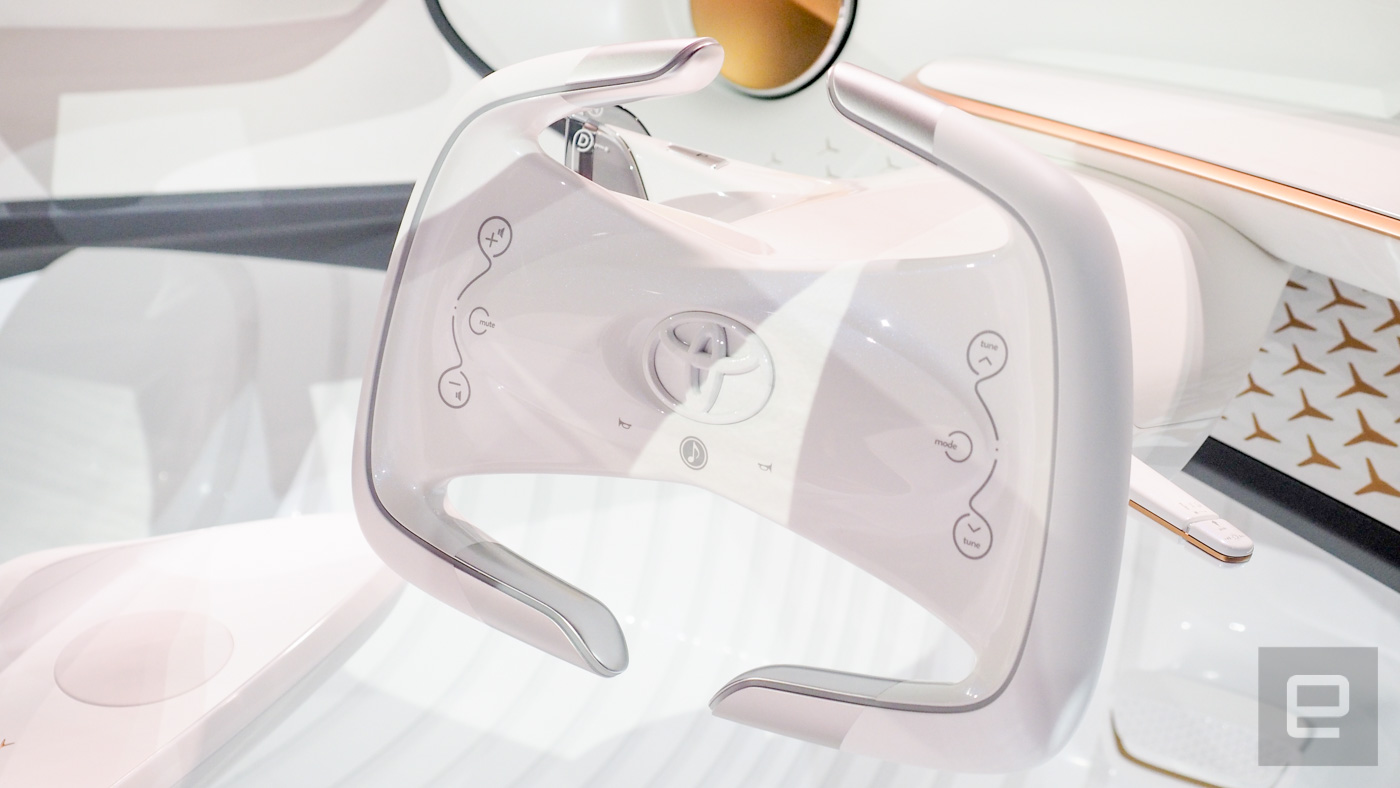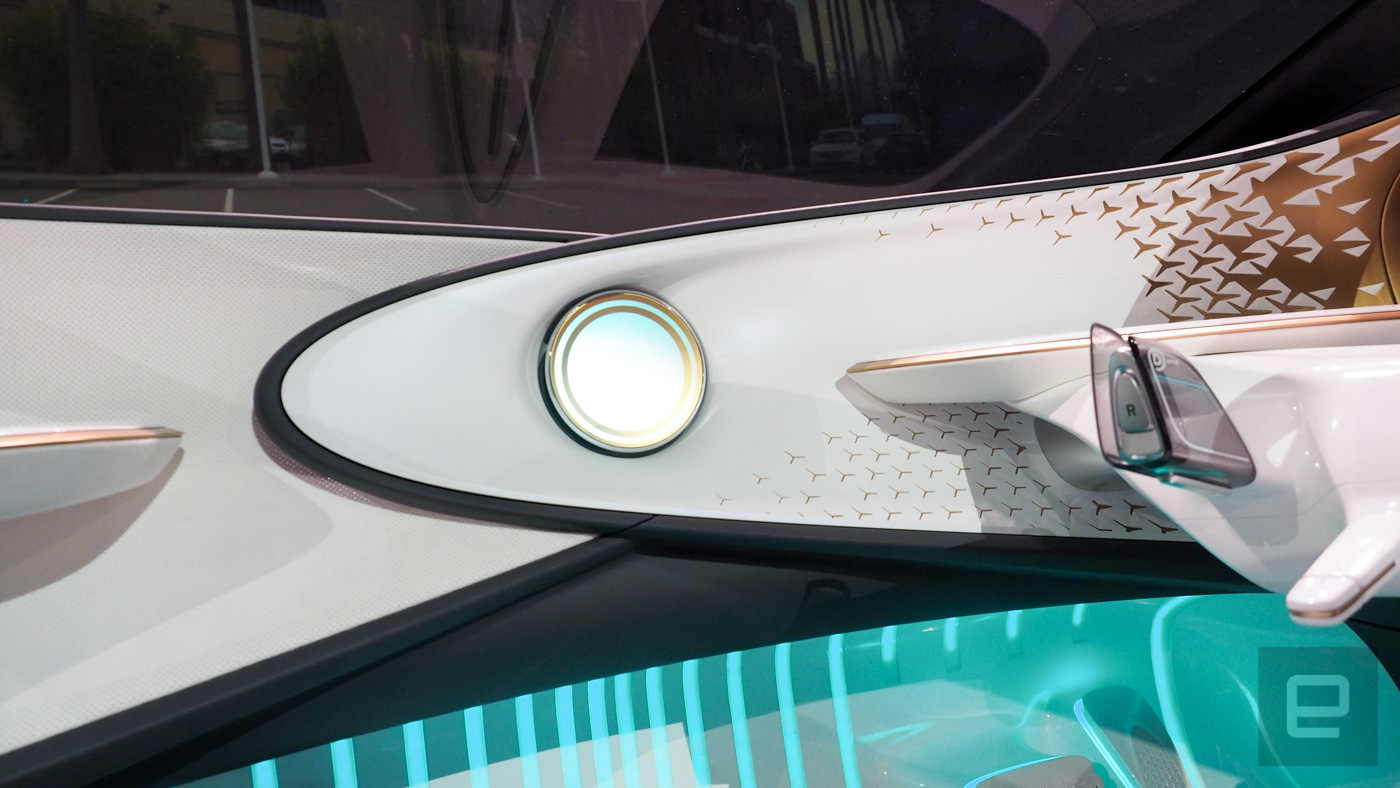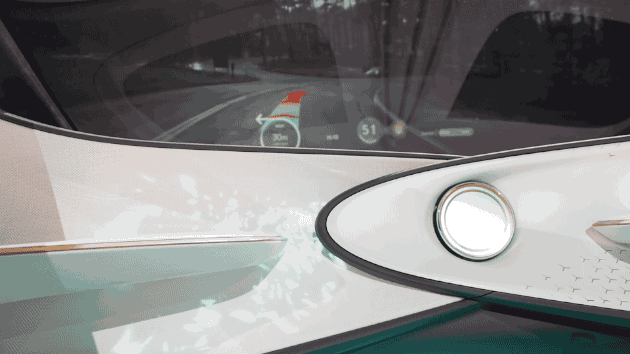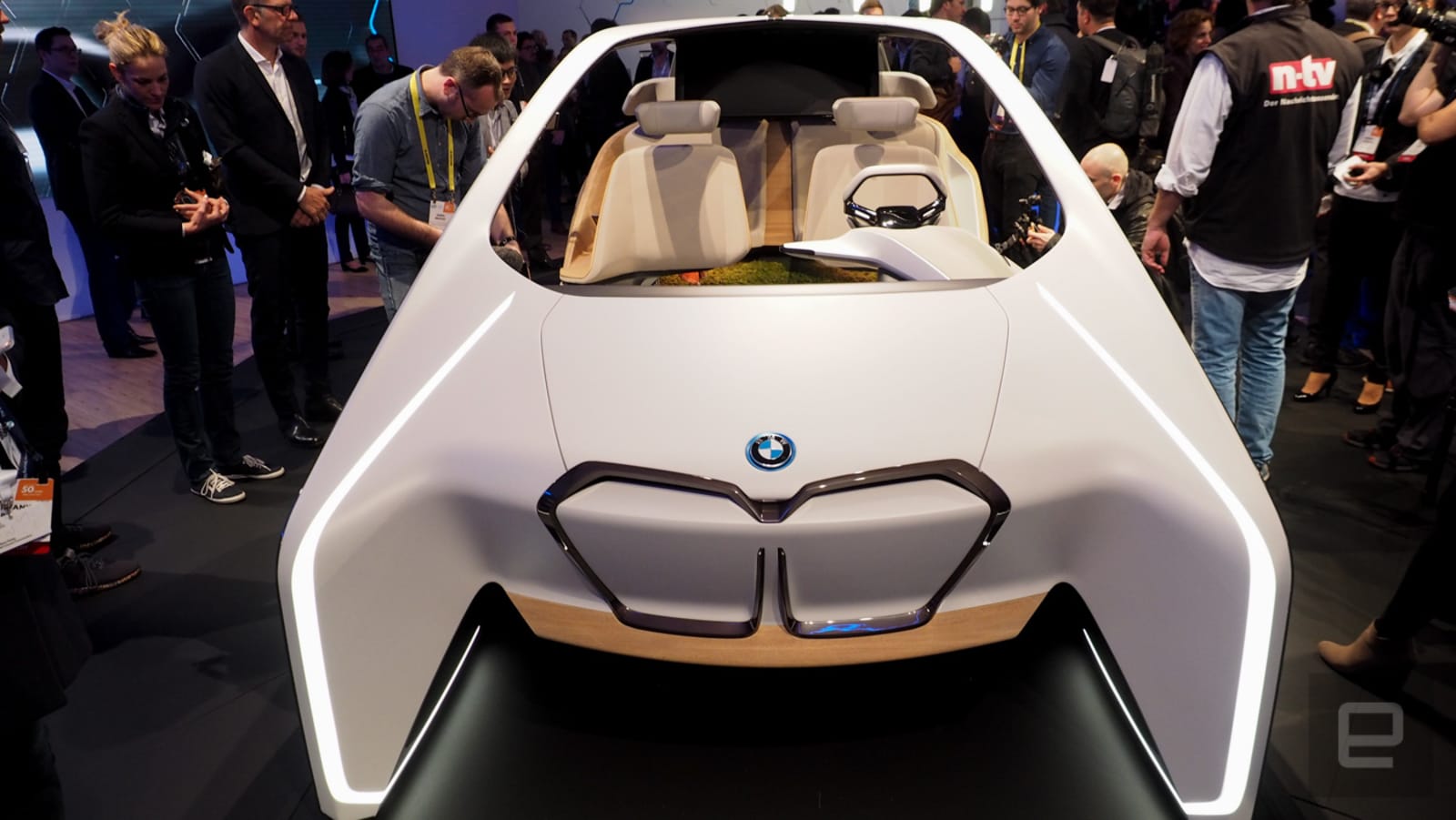The designer behind the Toyota Concept-i talks about being friends with a car
A lot of concept cars are coming out of CES. Most of them are geared toward making the passenger experience more relaxing. Toyota wants riders to also be at ease as well, but it also wants the driver to have a good time.
Toyota worked with the design Studio Calty to create the car shown at CES. Chief designer Ian Cartabiano chatted with us about what his team hoped to accomplish with the vehicle's interior and what it means for people who love to drive.
Interview edited for length and clarity
What is the sort of core genesis of the idea of the Concept-i?
Well, I would say like the Concept-i really is just our vision of what future Toyota and future driving could be in the year 2030, so it's a futuristic vision of 2030, and the idea is, how do we connect driver and car to society and driver society in this harmonious way, and how do we create a bond between the driver and the vehicle to basically improve your life and improve the driving experience? Then, just in a more nuts-and-bolts car way, what does "fun to drive" mean in the future, when technology is changing the way we drive in a very rapid pace?

It's actually a really fun project, probably one of the most challenging of my entire career because here at Calty we do concept cars, and we do production cars, and we do advanced projects a lot. But I don't think we've had to put on our philosophy hat to this extent in a long time. The basic questions is what's fun to drive in 2030? What does Toyota represent in 2030, and how do we create a bond between driver and car, and how do we reignite a love for cars in the future?
I love driving, but I hate traffic. Because traffic isn't driving, traffic is sitting in a box.
Right.
I feel like a lot of people are like, "Well, in the future, you'll just sit in the car, and it'll take you somewhere, and then that's it," and your idea is you guys are talking about the love of driving. The love of vehicles.
You hit the nail on the head. Everybody's working on autonomous driving and AI. So our task is what is Toyota's vision for that and how are we going to be different knowing that Akio Toyoda really believes in the driving experience, mobility for everybody, fun to drive and no more boring cars. How do we translate that into a future of what it's going to be?

Some people say that autonomous driving is going to basically mean the end of car ownership or the end of driving pleasure. I personally don't believe that. I think you're you're always going to need mobility. Smartphones, interconnectivity, social media, that can connect you with people on screens, but never in person. It can connect you to an image of a place, but that'll never replace the feeling of being there and getting the feeling of movement on a screen is different than actually having the wind going through your hair and feeling the road through the wheel. I think those things are eternal.
Humankind has wanted to move since the dawn of time, and I don't think that's going to go anywhere, so how do we translate that into a car, and how do we create a user experience? I don't even want to just say UX. I would say a unified user experience, starting with AI, that reconnects you to the driving experience, but also enhances your driving experience in life by giving you all the good things that AI can give you.
People have long had emotional attachments to cars and electronics. People became attached to their iPods when those first came out because it was a musical extension of themselves. Do you feel with AI you can take that to the next level?
Yes, exactly. I think we kind of envisioned it. So imagine when you first get a Concept Ai. It's like meeting somebody for the first time, and you share some information. Yui, which is what we're calling the agent in this car, kind of learns from the information that you share. You learn something about the vehicle, and as the days, weeks, months, years go by, the shared learning from each other basically means you get to know each other. Concept Ai and Yui learn and adapt, creating this bond. That bond and that partnership can really create a lot of interesting dynamics.

So, for example: We were talking about driving home, and I don't know where you're located, but where I'm at, I have a crazy commute. Say I've had a tough day at work and through maybe my meeting schedule, a social media posts, biometric feedback, the tone of voice, my pulse rate, my breathing rate, my body temperature, the way I'm driving, Yui can kind of tell that and maybe suggest, "Hey, let's not take the 405 today. I know you love driving. Why don't we take PCH? It's a beautiful day. The weather's gorgeous. Traffic is moving. It's a little bit longer. It'll take you this much time to get home." Then as we're driving maybe realize that we're driving by a restaurant I've always wanted to try. Like, "Hey, two miles away is this restaurant," and it will know from my social media posts, discussions with friends in the car or with Yui, that I've always wanted to try it.
Also for example, if it knows that I'm drowsy or getting sleepy it could start a conversation to keep my mind working to kind of wake me up.
And autonomous driving?
Another thing we talked about, is in this world of automated cars our driver's are always in control in our product. One thing you notice is the steering wheel doesn't retract and disappear like a lot of other people have been doing. You always want to have the steering wheel within reach.
Also, another interesting part of this car is that there are not screens everywhere. It's very trendy and very easy to put tablets all over cars, right?
Yeah.
We see that all the time. I'm so sick of that. What if we could make the information, in this car, contextual? All the best apps are doing it. I think it's what Gen Z basically just expects now from technology, the perfect amount of information at the right time, when you need it, catered to what you're expecting or even what you're anticipating, and then when you're done with that information it disappears.

We were able to execute that because we utilize a really huge 3D heads-up display. It's a 600 millimeter across and full color so we're able to put some key information in front of the driver. That allowed us to simplify the interior design, and instead of black, shiny screens everywhere we made everything kind of white and this gold metal trim. It's a very serene, soothing, yet beautiful, engaging space, and when you need information on the dashboard or IP, it seems to appear out of the white space. It's kind of this magical feeling of information. It seems to come out of nowhere, and that's what we think is another interesting aspect of our vision of the future, is it's not overloading you with info. It's what you need when you need it, and everything that you can have or need to improve the driving experience and your ultimate well-being.
It kind of looks like the cool hatchbacks of the '90s, and so I'm looking at this, and I'm like, "This is really cool-looking." It's a concept car, but it seems to have an appeal that's bigger than what millennials or Gen Z-ers want. Was that something Calty was thinking about?
At Calty, we do a lot of concept cars, but they're always based in true user research, good ergonomics, usability and something that could possibly be made, and then also we thought that, no matter what the generation, beauty and sculpture, and humanistic artistic flavor is timeless and cross-generational, so when you think about real use, we didn't want to make a giant car or a totally useless show car, where only one person can fit in it, and you can barely fit in that. What's really cool about this car is you can to sit in it. Four adults sit in this thing comfortably, and the feeling of space. I mean it's beautiful and comforting and serene and just feels fun at the same time.
We're not doing a hyper-luxury car, and this is something that I really love about this project. It's a vision of the future that's for everybody, and I really like that, and the idea that we are experts in mobility, and we can share mobility with all generations, I think that's something that Toyota is really great at, and we tried to execute that in the car. It's a really great size. It's a really useful size, and it's just really a beautiful work of sculpture.

Everything starts with the user experience, with Yui's home in the center of the dashboard, and the way it flows all the way around the car from one point. You can really sense it when you walk around the vehicle. Every surface moves. The information around the car moves. Lighting seems to appear out of nowhere. Again, that kind of magical experience, and that's really also the fun of futurism. Sometimes these autonomous cars can be so sterile and not fun, and the future can be fun, and we want to show a happy, positive vision of the future that's, again, warm and friendly.
